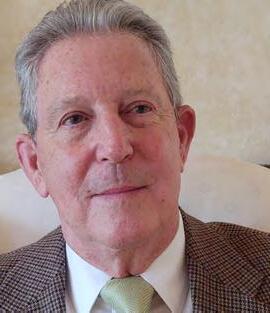
5 minute read
Controlling the Office Schedule
Controlling the Office Schedule
It may not be possible to eliminate all the stressors inherent in running a dental practice, but adopting some proven strategies can make the office run smoother and add to your bottom line.
In two national surveys on dental practice stress I helped conduct, the number-one stressor was “running behind schedule,” followed closely by “constant time pressures.” Ranked fourth was “dissatisfied, ungrateful patients.” These three issues, along with several others, can significantly be reduced if the dentist and staff proactively control the schedule rather than allowing the schedule and patient demands control them.
A wise dentist schedules for peace, not panic. Learn to control your appointment book before your next meltdown, or it will happily control you.
Admittedly, no one can completely eliminate running behind schedule or dissatisfied patients. Dentistry involves imperfect humans working on imperfect humans, using imperfect materials under often unpredictable conditions. A cusp fracturing unexpectedly or an inadvertent pulp exposure can disrupt anyone’s schedule. Still, our primary objective must always be to minimize these situations through proactive scheduling and planning.
Here’s a brief story to illustrate the point.
Early in my practice, there was Mrs. Goss (not her real name), the patient straight from Hades. She entered my practice before I knew enough to close the proverbial barn door. Initially, like many young dentists starting a practice, anyone with a pulse seemed like a suitable patient. But Mrs. Goss quickly became a major source of stress: always dissatisfied, perpetually complaining about trivial things—our music choices, the taste of the water or if we were five minutes late seating her. Her husband, bless him, was kind and patient, the exact opposite of her.
I worried about dismissing Mrs. Goss, given her connections at a large local employer from which we’d received many patients, but after much deliberation, courage prevailed, and I sent her a dismissal letter. She responded emotionally, shocked by our decision. I explained the facts and realized I had made a wise decision when many patients from her workplace later confided in us that they couldn’t believe we’d tolerated her for as long as we had. Mr. Goss remained a loyal patient, and our practice atmosphere dramatically improved.
The lesson here: You, as the dentist, must control your schedule, set firm rules from the start, and dismiss patients who habitually fail appointments, arrive late, disrespect staff or refuse to pay. Let them go make another dentist’s life miserable. You’ll discover that dismissing difficult patients will likely enhance your practice reputation rather than harm it.

Scheduling Strategies for Success
A significant scheduling problem occurs because appointment schedulers typically don’t understand clinical procedures unless they previously served as assistants. Thus, educating schedulers and periodically cross-training them is essential. Train your scheduler thoroughly on the duration and complexity of various procedures and how to distinguish between real and perceived emergencies. They must also understand how hygiene visits impact your schedule, particularly if you need to examine the patient.
Avoid overpacking your schedule, as this only increases stress and dissatisfaction among patients and staff, often negatively impacting practice revenue. It may seem counterintuitive, but sometimes less is more—more effective, more profitable and far less stressful.
Morning meetings are crucial. They should never be rushed or skipped. Briefly reviewing your entire week’s schedule on Monday morning allows you to identify and address potential scheduling conflicts in advance. Incorporating a 15-minute “flex time” in your morning and afternoon schedules, rather than losing you money, can significantly reduce stress and prevent your day from spiraling out of control.
The Importance of a Call List
A well-managed call list is essential. Use it effectively to fill schedule gaps and cancellations. Patients often appreciate being called earlier than their appointed times, particularly for returning lab cases, many restorative procedures or hygiene appointments and if you are scheduled out a long way. Categorize your call list clearly by procedure, patient preference for days, times and required notice.
Appointment Confirmations
Make sure to confirm appointments electronically several days in advance and follow up with a personal call for cancellations or if no response is received. Find out the reasons for cancellations and do not let patients fall through the crack.
Another effective strategy is to assign a staff member (compensated appropriately) to handle confirmations remotely in the evening. If someone cancels, they can immediately go to the call list and fill that time. This ensures fewer surprises, dramatically reduces last-minute cancellations and is a huge financial benefit.
Points to Ponder in Scheduling Control
1. Clearly communicate rules and expectations to patients from the outset.
2. Dismiss problematic patients decisively.
3. Educate your scheduler thoroughly about procedures, emergencies and optimal scheduling practices.
4. Understand that overbooking does not always equal increased income.
5. Always maintain control over the schedule—offer specific appointment times rather than allowing patients to dictate.
6. Make morning meetings a top priority.
7. Implement 15-minute flex periods each day.
8. Use a well-structured call list consistently.
9. Confirm appointments and promptly fill openings and reschedule patients.
10. Consider evening confirmation calls to maintain a robust schedule.
By adopting these strategies, you will reduce stress, increase productivity, enhance patient satisfaction and improve your practice’s financial health.

Gary Stough, D.M.D., is a former Marine Corps aviator, graduate of the Dental College of Georgia, past president of the Georgia Academy of General Dentistry, PACE CE provider and general dentist in Northeast Georgia. He can be reached at gstoughdmd@gmail.com.








